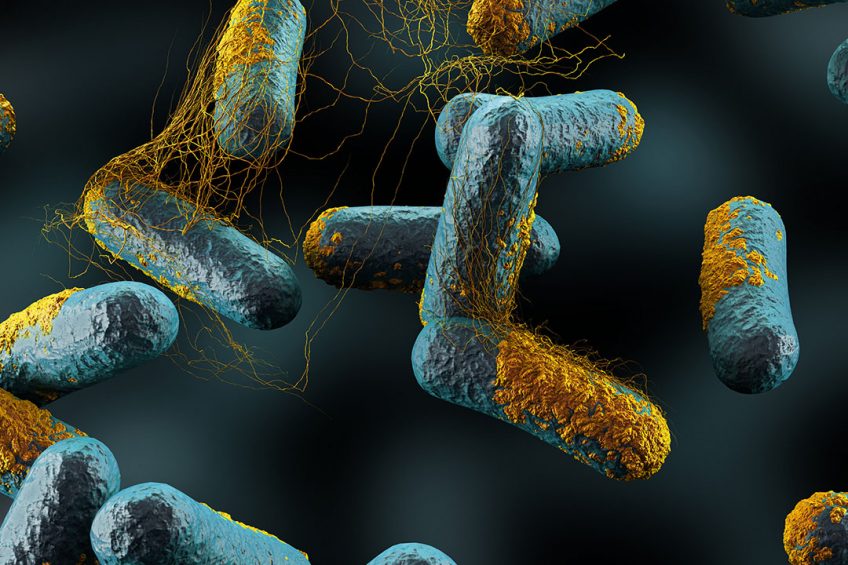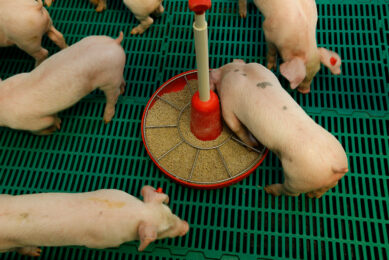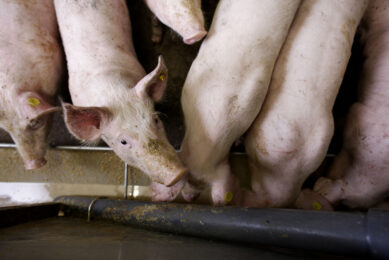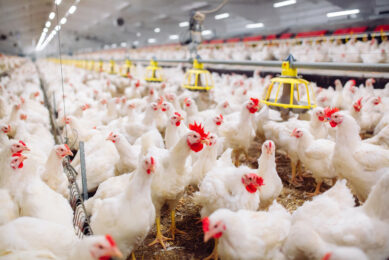Preventing necrotic enteritis in broilers

Necrotic enteritis (NE) is a multi-factorial disease, resulting in a negative impact on the poultry industry due to decreased weight gain, increased mortality, lower feed conversion ratio, greater medication costs and increased risk of product contamination.
Clostridium perfringens (C. perfringens) is considered to be the main causative agent of NE in birds. However, development of NE is a complex process requiring one or several predisposing factors rather than just the presence of pathogenic C. perfringens. Any factor that induces stress in animals could be a predisposing factor for increased risk of developing NE, because it could alter the intestinal environment, damage the enterocytes and allow the colonisation of the C. perfringens. These predisposing factors include the type of diet, the co-infection with other pathogens particularly coccidia, as well as environmental, nutritional and management factors. Inflammation is an important consequence of NE. Microscopic evaluation of early stages of necrotic enteritis reveals strong inflammatory reactions to C. perfringens. In case of inflammation, the intestinal mucosa is damaged, which decreases nutrient digestion and absorption, reduces growth rate, and increases feed conversion ratio. However, the impact of inflammation on performance reduction due to NE, may have been underestimated. Restriction on the use of in-feed ‘growth promoting’ antibiotics has led to elevated incidence of NE in poultry production systems. Therefore, the development of effective antibiotic alternatives to control NE has become an important and necessary challenge. Antibacterial additives are a logical alternative however, prevention of predisposing intestinal damage is also an important factor for such a multi-factorial disease knowing that proliferation of C. perfringens benefits from epithelial barrier damage and inflammation. Therefore, a combination of different active ingredients acting synergistically may hold the most promising approach to prevent NE.
In vitro and in vivo studies
In in vitro and in vivo studies, the synergistic anti-inflammatory effects of Lumance (Innovad), a complex blend, combining target-release butyrate, fatty acids, plant extracts and essential oils was demonstrated. This study a) evaluated the in vitro antibacterial activity and b) correlated the findings with a large-scale in vivo trial that evaluated the ability of the product to replace three commercial non-antibiotic feed additives used to control NE and maintain performance in the absence of AGP’s. The antibacterial activities against C. perfringens isolated from the intestine of broilers were studied in vitro. It was added at different concentrations (ranging from 400 to 2000 mg/kg) to a medium inoculated with C. perfringens. The antimicrobial susceptibility testing was performed using the broth microdilution assay based on the ISO 10932/IDF 223 standard protocol. Bacterial growth was monitored by measuring the optical Density at 580 nm.
The large-scale in vivo trial (7.3 million broilers) was carried out from February-April 2018 in an antibiotic free programme in North America. The US broiler complex had been using a combination of three feed additives. Namely, a calcium butyrate (Kemin), a probiotic (Novus) and a natural anticoccidial (Phibro) product to prevent necrotic enteritis and improve performance. These three-feed additives were replaced with Lumance, which was administered at 1.5 kg/t (starter), 1 kg/t (grower), 0.5 kg/t (finisher) and the broilers were raised until 36 days of age. Amprolium, a non-antibiotic coccidiostat which can be used in antibiotic free production in the US, was used in both groups at the recommended dose rate. No other additives nor ionophore coccidiostat were used.
Figure 1 – Trial results of Lumance against C. perfringens.

Encouraging results seen
Supplementing with the product effectively inhibited the in vitro growth of C. perfringens in a dose-response manner (Figure 1). This beneficial effect was attributed to the ability of the active ingredients of the product to passively pass across the cell membrane of the cells, dissociate in the more alkaline interior, acidify the cell cytoplasm, dissipate the proton motive force and cause cell lysis. The results showed that use of the product at 2000 ppm reduced pathogenic C. perfringens by 70%. The data suggest that such a dose may have a beneficial impact on reduction of pathogenic C. perfringens in field conditions. In conclusion, the in vitro susceptibility data provides support that Lumance could be an effective treatment for prevention of NE in animals. In the in vivo trial, no signs of necrotic enteritis were found in the supplemented group, whereas in other groups necrotic enteritis was seen. No differences were found between the combination of the three feed additives and the Lumance groups in relation to average weight gain (AWG), feed conversion ratio (FCR), liveability and daily weight gain (DWG), see Figure 2.
Figure 2 – Effect of the experimental diets on the performance indices of broilers at day 36.

The product successfully controlled NE and effectively replaced all other additives, without the use of medication and growth promoters. It demonstrated a clear ability for use in starter, grower and finisher diets by ensuring top performance, beneficial feed conversion and controlling NE in an economical way. However, to further minimise NE issues, maintaining moisture levels of the poultry house litter within the recommended range is necessary. To achieve this, poultry producers must ensure that high quality feed is provided to the flock, disease pathogens are not permitted to enter the premises, and adequate ventilation systems with quality bedding material are used.
This research shows that supplementing diets with the active ingredients mixture can improve the health status of the bird hindgut and have a beneficial impact on the prevention of NE in broilers by reducing subclinical infections via reduction of C. perfringens levels, and by reducing the risk of wet litter. This combined with previous research on the anti-inflammatory action of the product demonstrates its potential to regulate important factors related to disease (not only those contributing to NE) and consequently, improve the growth performance of broilers, in an antibiotic-free and economical way.
References available on request
Authors: A. Khadem, J. Al-Saifi, B. Letor, S. Bauwens, J. van Belle, M. Al-Saifi, M. Sevastiyanova and C. Gougoulias, Innovad











